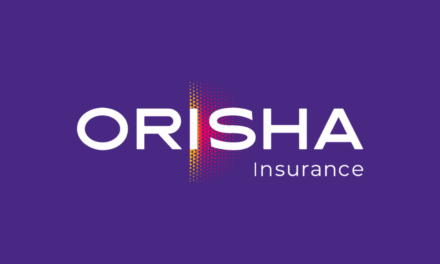Imagine a family living in a rural region of sub -Saharan Africa. Their main income comes from agriculture, and a bad season due to drought can immerse them in extreme poverty. The disease of a child, sudden floods, or even the death of the head of the family can have disastrous consequences on their future. Without access to adequate financial protection, these populations are extremely vulnerable and deprived of the advantages of inclusive finance.
In this context of precariousness, micro-assurance presents itself as a promising solution for social protection. It offers financial protection accessible and adapted to the needs of low -income populations, allowing them to better face the vagaries of life and to build a more stable future.
What is micro-assurance? Fundamental characteristics and principles
Micro-assurance is a form of insurance specifically designed to meet the needs of low-income populations which are traditionally excluded from conventional insurance markets. It is distinguished by several essential characteristics, which make it accessible and relevant for this target audience. Its success is based on adaptation to local realities and a collaborative approach involving various actors in inclusive finance. Micro-assurance is an essential risk management tool for these populations.
Detailed definition of micro-assurance
Micro-assurance is different from conventional insurance by its financial accessibility, simplified coverage and innovative distribution channels. These combined elements make it possible to offer products adapted to the realities of vulnerable populations and to promote financial inclusion. The primary objective is to offer them protection against unforeseen financial shocks, thus strengthening their financial resilience. It is inclusive insurance that is part of a global social protection strategy.
- ** Affordable bonuses: ** Micro-assurance bonuses are calculated to be accessible to people living with low incomes. They are often proportional to income and can be paid flexibly (for example, weekly or monthly). In Asia, the average cost of health micro-assurance is estimated at around 5 dollars per year, which represents a fraction of the cost of conventional health insurance.
- ** Simplified coverage: ** Micro-assurance fonts generally offer simplified coverage for specific risks. The clauses are clear, limited exclusions and complaint procedures are simplified to facilitate understanding and access to allowances. This allows faster claims and better risk management.
- ** Innovative distribution: ** Micro-assurance uses distribution channels adapted to remote areas and populations that are difficult to reach. This includes collaboration with microfinance institutions (MFIs), cooperatives, non -governmental organizations (NGOs) and telecommunications operators. In Africa, 40% of micro-assurance distribution goes through MFIs.
The different types of micro-assurance
There are a variety of micro-assurance products to meet the specific needs of vulnerable populations. They cover different risks and adapt to the activities and lifestyles of these communities. Micro-assurance is therefore a versatile tool that contributes to social protection and financial resilience of beneficiaries.
- ** Micro-assurance of sickness: ** It covers medical costs, hospitalization and the purchase of drugs. It may include medical consultations, laboratory examinations and surgical interventions. In Bangladesh, health micro-assurance programs made it possible to increase the rate of medical care by 20%, demonstrating the positive impact on access to health services.
- ** Micro-assurance death: ** It pays a capital to the beneficiaries in the event of death of the insured. This capital can help cover funeral costs, debts and ensure the subsistence of the family. In some African countries, this insurance is often linked to microfinance programs, providing integrated protection.
- ** Agricultural micro-assurance: ** It protects farmers from harvest losses due to climatic hazards, culture disease and parasites. Index insurance, based on meteorological indices, is a common form of agricultural micro-assurance. For example, insurance can be triggered if precipitation is below a threshold given for a critical period of culture growth, thus guaranteeing rapid compensation.
- ** Micro-assurance of goods: ** She provides essential goods, such as house, work tools and livestock. It can cover the damage caused by fires, floods, thefts or other unforeseen events. Protecting your work tool is essential for low -income populations and contributes to economic stability.
Fundamental principles of successful micro-assurance
To be effective and have a lasting impact, micro-assurance must respect certain key principles. Adaptation to local needs, simplicity and transparency of products, financial education of target populations and multi-actor partnerships are crucial elements. These principles guarantee the membership of communities and the success of inclusive finance programs.
- ** Adequacy to local needs: ** It is essential to design micro-assurance products according to the specific needs and risks of the target populations. An in -depth study of local realities is essential to ensure that the proposed coverage is relevant and useful. For example, in the fisherman's area, micro-assurance must cover the risks linked to navigation and bad weather at sea.
- ** Simplicity and transparency: ** Insurance contracts must be clear, simple and easy to understand for populations, often little familiar with financial products. Complaint procedures must be transparent and accessible. The use of a clear language and the eviction of technical jargon are essential to strengthen confidence.
- ** Financial education and awareness: ** Financial education plays a crucial role in the adoption and understanding of micro-assurance. It is important to educate populations about the benefits of insurance and teach them to manage financial risks. Awareness workshops can be organized within communities and led by inclusive finance experts.
- ** Multi-actor partnerships: ** Collaboration between insurers, microfinance institutions, NGOs, governments and local communities is essential. These partnerships make it possible to pool resources, share knowledge and reach a wider audience. For example, an NGO can facilitate access to local communities and monitor programs.
The benefits of micro-assurance for vulnerable populations: a development catalyst
Micro-assurance offers many concrete advantages to vulnerable populations. It strengthens their financial resilience to unforeseen shocks, improves their access to health care, supports local economic development and promotes the empowerment of women, key actresses in inclusive finance. It is a real lever for social and economic progress, contributing to better social protection.
Continue to optimize the rest of the content in the same way




